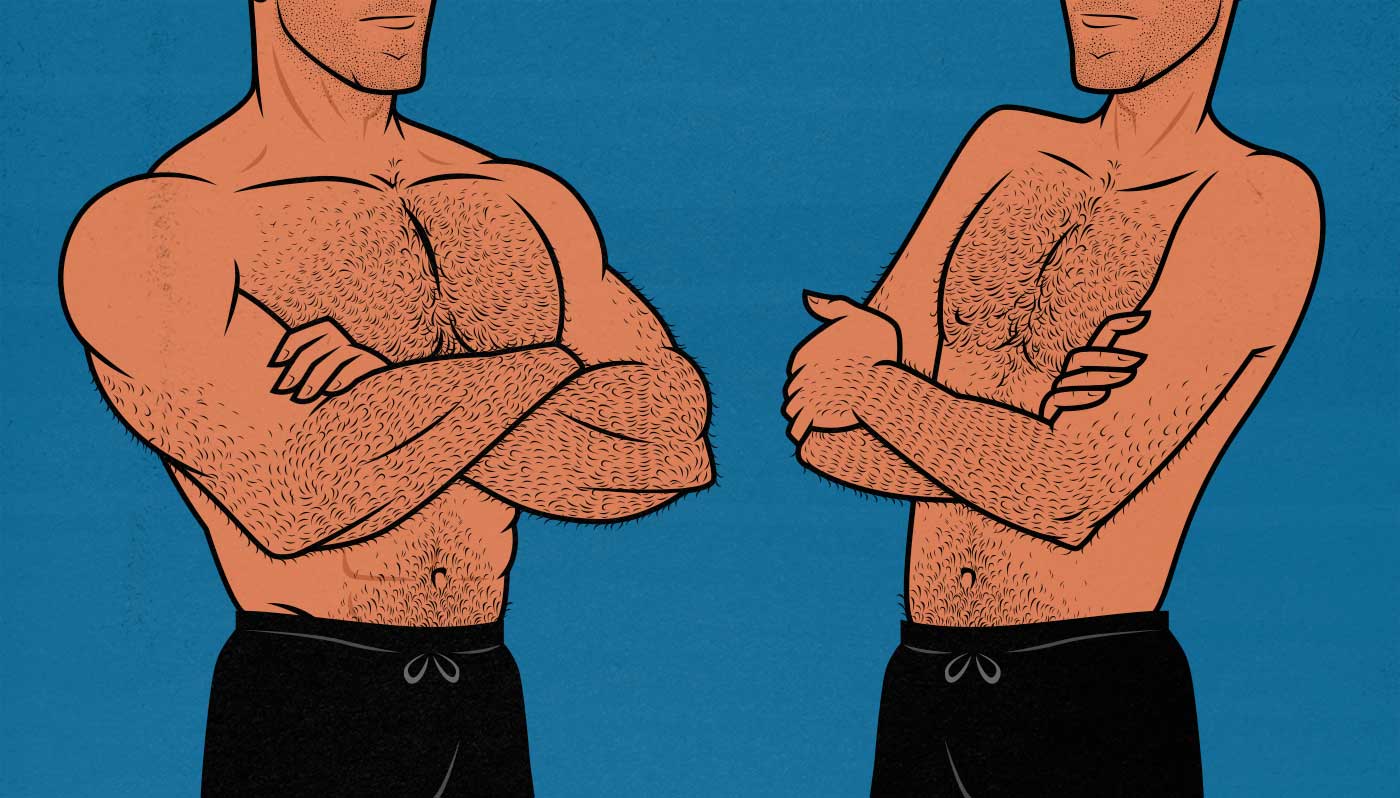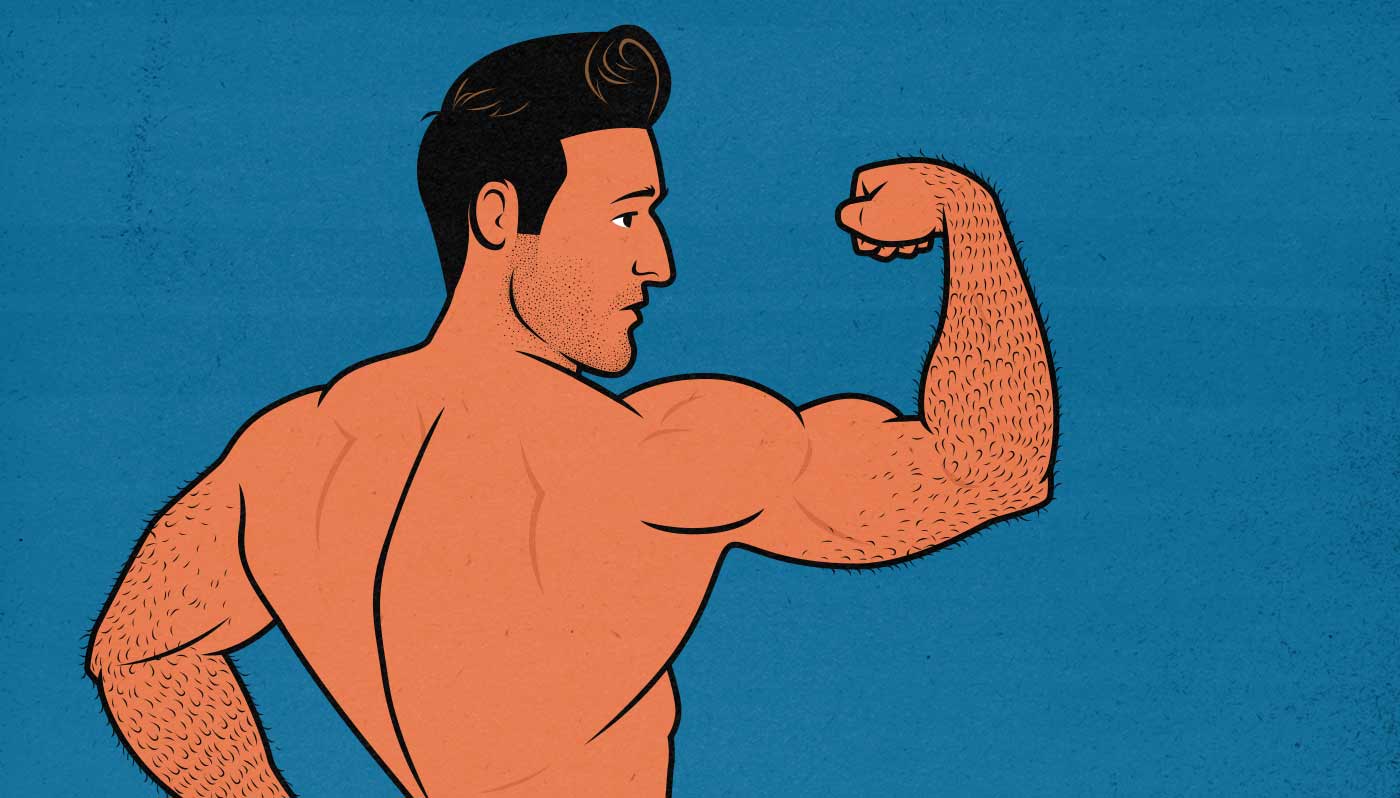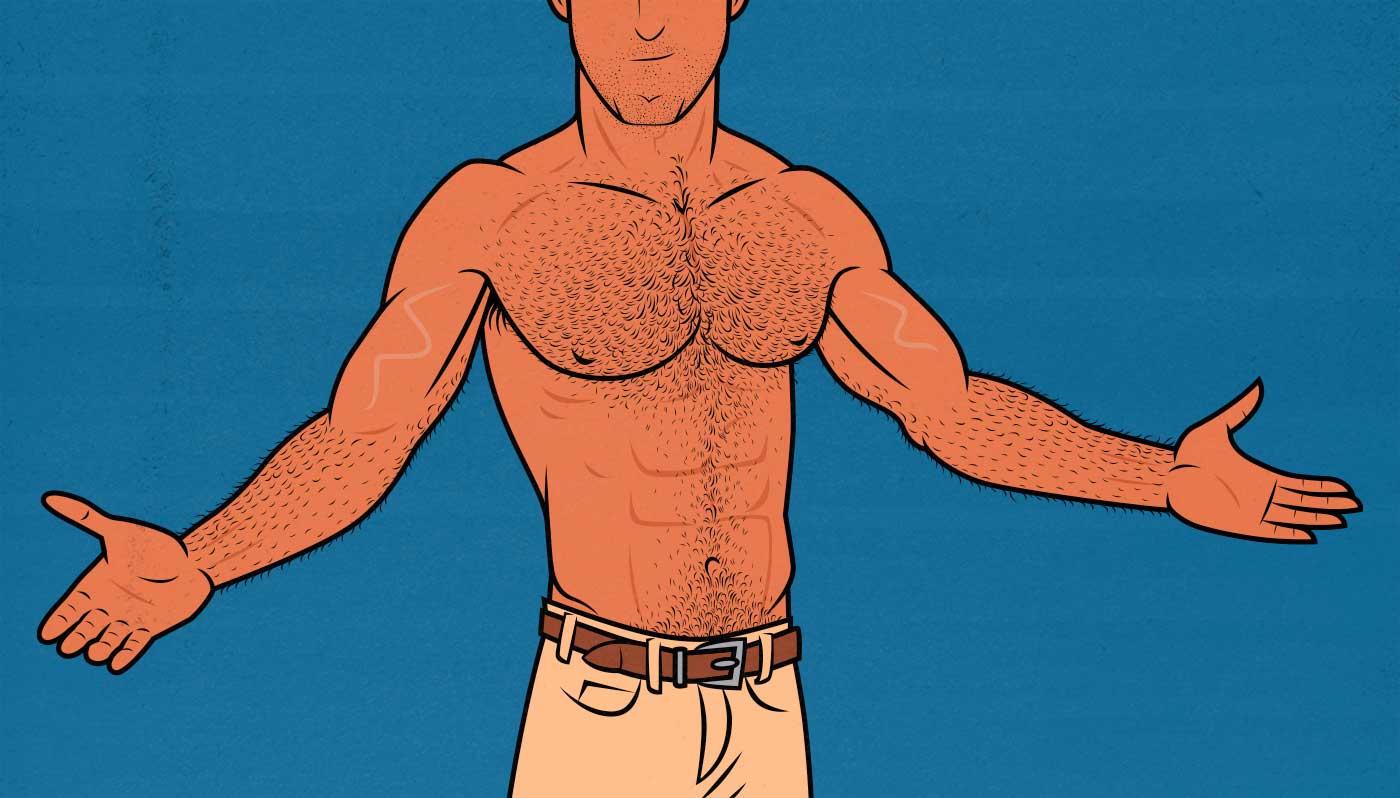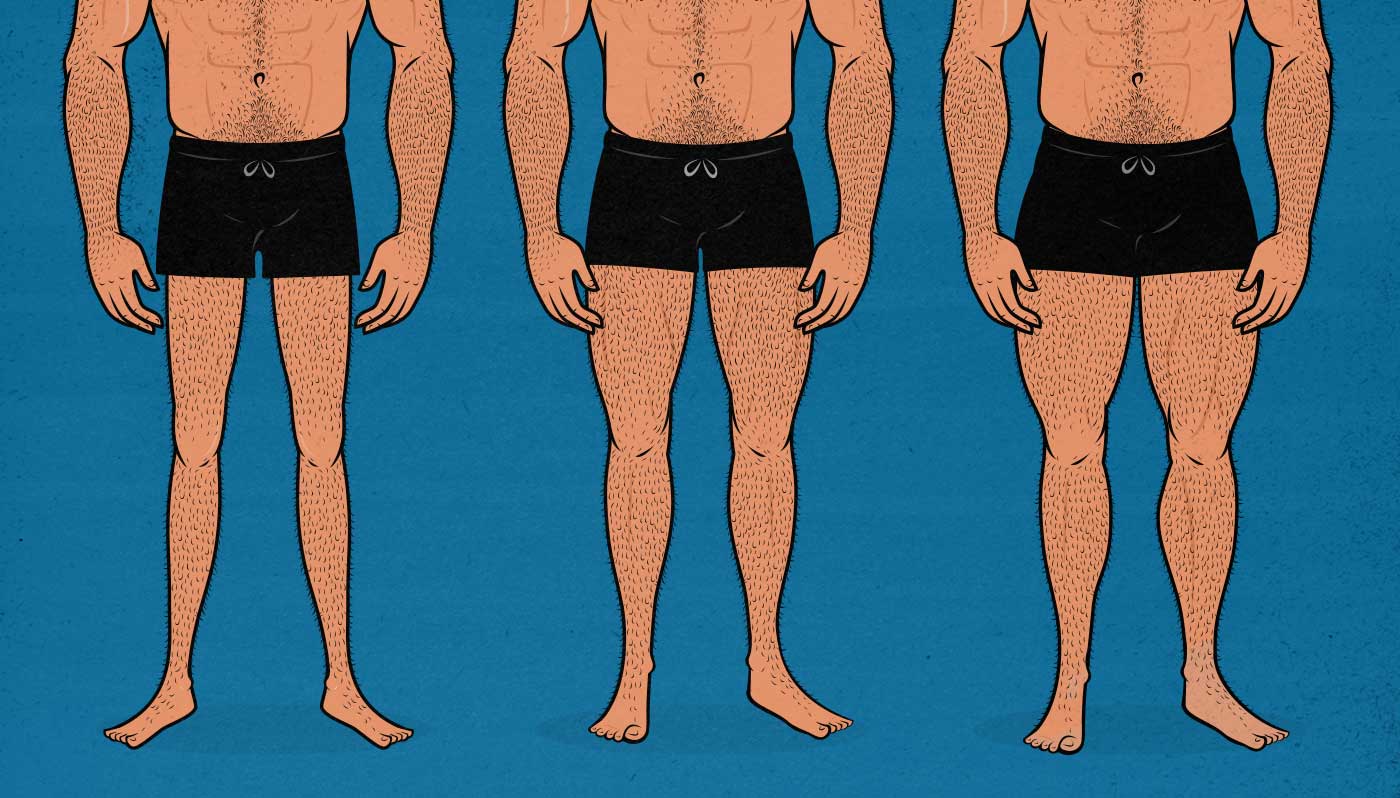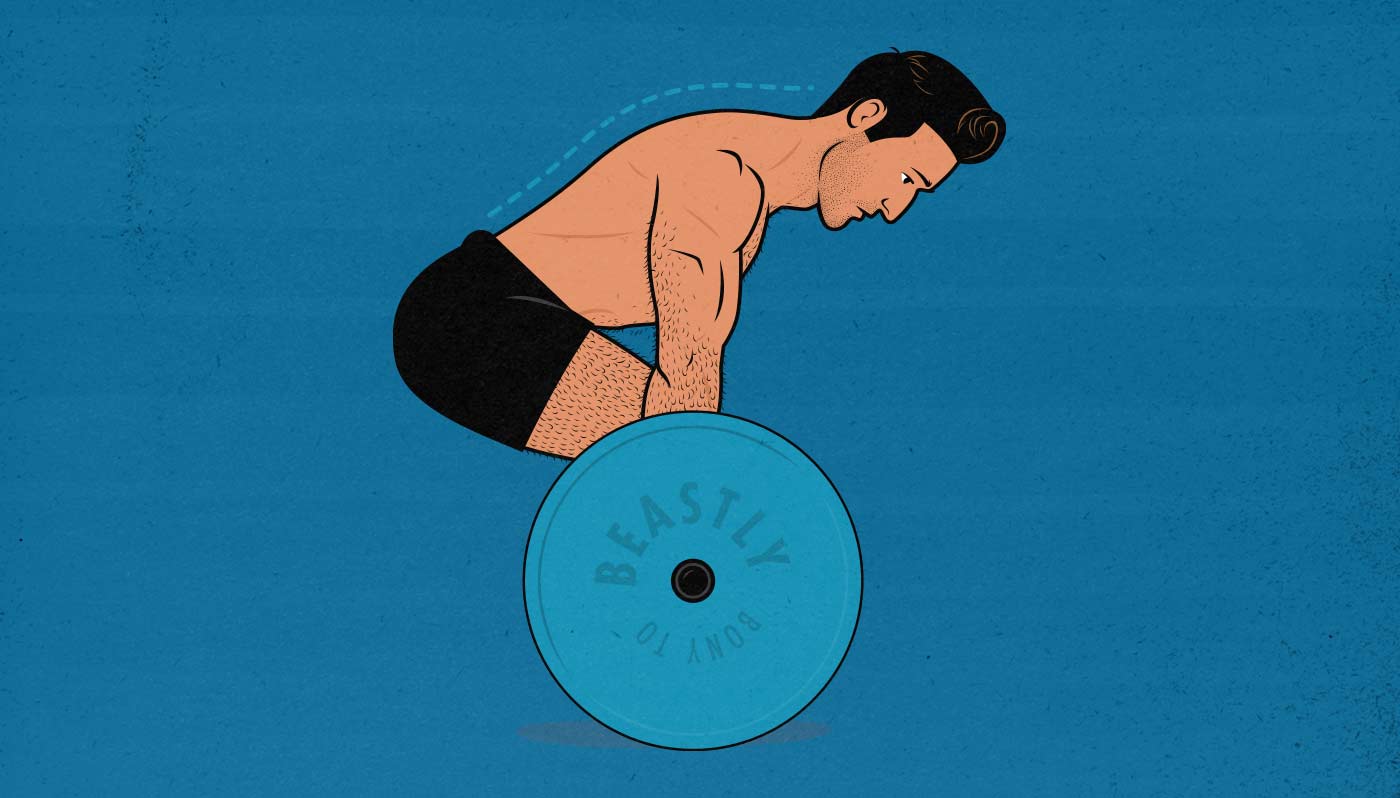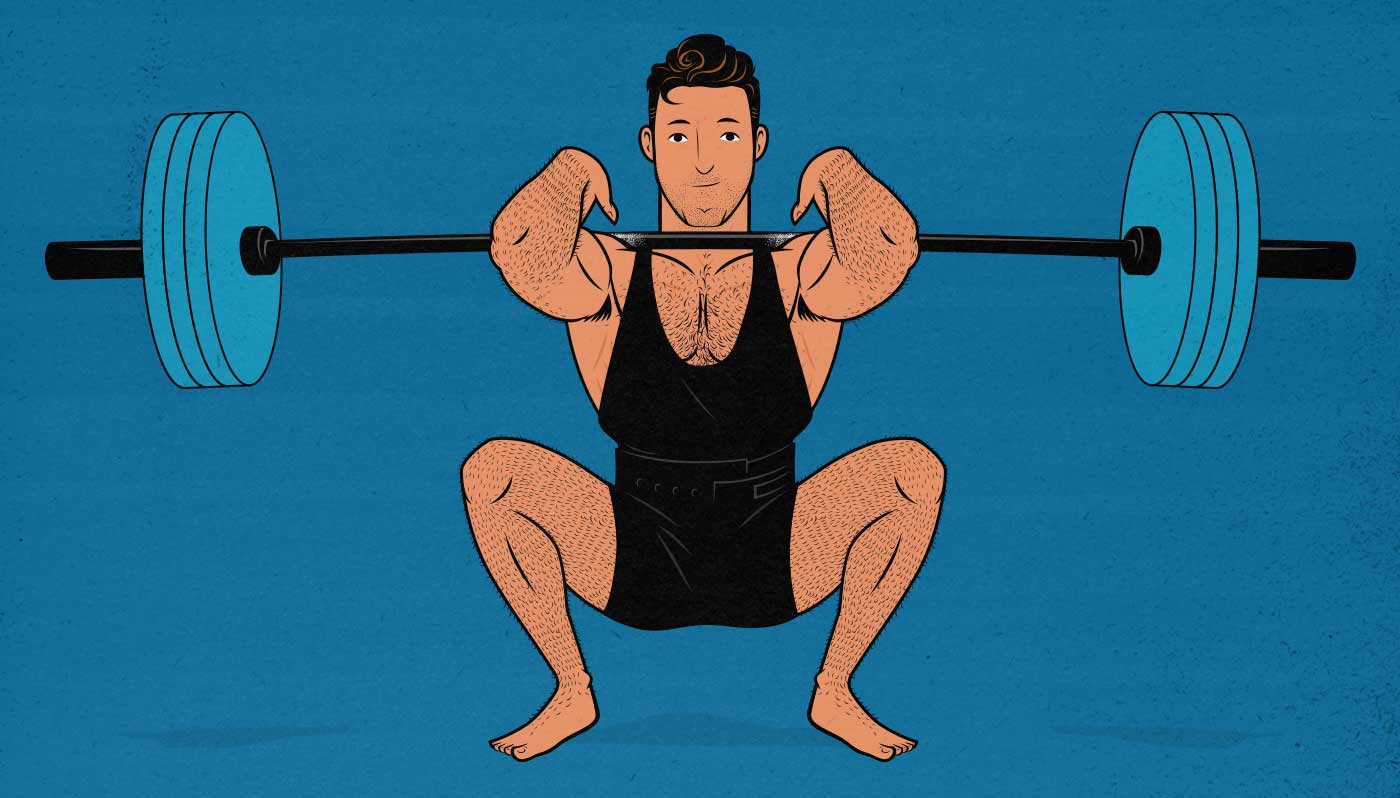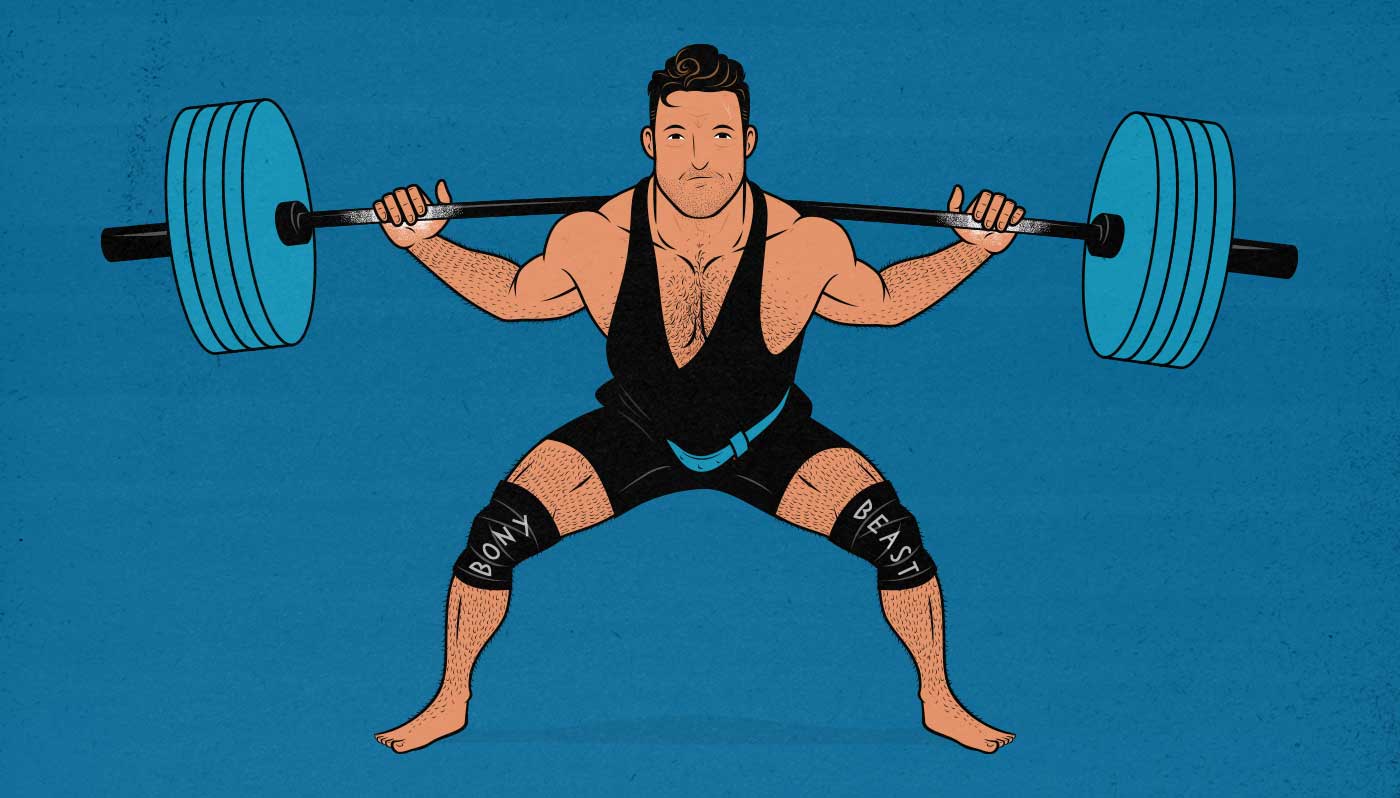Aesthetics
Survey Results: What Does the Most Attractive Gay Male Body Look Like?
We surveyed 102 men attracted to men, asking them to rate varying degrees of muscularity and leanness. We also asked them which muscle proportions they found most attractive. Topics include:
- What’s the most attractive degree of muscle?
- What’s the most attractive body-fat percentage?
- Do gay men prefer more muscular upper bodies?
- Which muscles do other men find most attractive?
- What muscle proportions do gay men prefer?
Here are the results.
Read MoreForearm Training: How to Build Bigger Forearms
When you first start lifting weights, it’s a good idea to focus most of your energy on the big compound lifts. Your workouts start with lifts like the squat, bench press, deadlift, chin-up, and row. These are the biggest lifts that build the most overall muscle mass. After that, we add in some isolation lifts. Curls for our biceps, extensions for our triceps, lateral raises for our shoulders, and maybe some exercises for our abs. These train the muscles that aren’t properly stimulated by the big compound lifts.
As you gain weight, build muscle, and get stronger at these lifts, you’ll probably notice that your grip is getting stronger, and your forearms are getting bigger. This is because the rows are training your elbow flexors, the biceps curls are training your wrist flexors, and the lateral raises are training your wrist extensors. They aren’t the main muscles being worked, but since we’re new to lifting weights, they grow.
The thing is, as you continue getting bigger and stronger, you’ll probably notice that your forearms stop growing. That’s because your forearm muscles have gotten both stronger and tougher, and these compound lifts aren’t challenging them enough to provoke any growth.
So how do we get bigger forearms? We train them directly. Here’s how.
Read MoreThe Skinny Guy’s Guide to Building a Hollywood Physique
In this article, I want to talk about realistic physique goals, both in terms of understanding the timeframe that it takes to build muscle, as well as how good you can expect to look by the end of it. Perhaps it’s our audience, being largely made up of skinny guys who actively seek out information, but we tend to see things differently than a lot of other fitness professionals.
Can you look like the sex icon from the latest Hollywood movie? Well, you can’t transform your face, and building muscle won’t automatically make you more charismatic, but can you have physique of Brad Pitt from Fight Club, Christian Bale in American Psycho, Will Smith in I Am Legend, Gerard Butler in 300, or Daniel Craig in James Bond? Yes, you probably can.
None of those actors have great muscle-building genetics. All of them are naturally skinny—so-called ectomorphs. Some of them are naturally lean, yes, but so are many of us. And believe it or not, most of them didn’t even routinely lift weights until a few months before shooting for those films. These aren’t just realistic physiques, these are physiques you can probably build with just a few months of dedicated weight training.
I realize this might sound crazy, but hear me out.
Read MoreHow Big Should Men Build Their Legs?
What’s the ideal male leg size? How often should we be squatting and deadlifting? How much emphasis should we put on leg training if our goal is to improve our health, general strength, and appearance? What’s interesting is that there are popular views at opposite ends of the spectrum:
- Some aesthetics-oriented approaches have us spending more of our time doing upper-body training: more incline bench pressing, chin-ups, overhead pressing, and biceps curls. If lower-body training is included at all, it’s often lighter stuff, such as one-legged squats and Romanian deadlifts.
- Some strength training programs tell us to focus on getting stronger at the Big Three lifts: the squat, bench press, and deadlift. In those circles, it’s common for every workout to start with a few sets of strenuous back squats. Is that a good way to build a strong and attractive physique?
If we’re trying to build strong, healthy, and attractive physiques, how big should our legs be? How often should we train them? And what lower-body lifts should we choose?
Read MoreHow to Deadlift for Muscle Growth
Deadlifts are one of the only true full-body lifts. They challenge our muscles from our fingers down to our toes and stress our bodies from the skin on our palms all the way down to our bones. They’re hard, tiring, and absolutely amazing for building muscle, gaining strength, improving our fitness, and becoming much better-looking.
When it comes to bulking up, the only lift that can rival the deadlift in terms of sheer muscle growth is the squat (and especially the front squat). Even then, the deadlift has a few unique advantages:
- Deadlifts bulk up our traps, spinal erectors, and glutes, as well as a number of other muscles in our upper backs, all of which are great for improving our aesthetics.
- Deadlifts are one of the best ways to increase bone density and spine health, which is great for our health and longevity.
- The strength we develop with deadlifts transfers near-perfectly to our daily lives, making us look strong because we are strong.
- Squats and deadlifts train different muscles, with the front squat emphasizing the quads and upper back and the deadlift emphasizing the hamstrings, glutes, and entire back.
As with all the big lifts, though, there are several different ways of deadlifting, each with different pros and cons. And given how many different sorts of adaptations deadlifts provoke, it’s not surprising that some ways of deadlifting are much better for building muscle than others.
Most guys who are interested in strength favour the conventional deadlift. That’s wise—and we’ll explain why—but they deadlift for low reps and drop the bar to the ground after every repetition, making it worse for building muscle mass.
The most heinous sin, though, belongs to the bodybuilders who forego the deadlift altogether, thinking it isn’t a good lift for gaining muscle. That couldn’t be farther from the truth.
Read MoreThe Benefits of Goblet Squats & Front Squats
Squats are the biggest lift, engaging the most muscle mass and stimulating the most muscle growth. And of all the squat variations, front squats are the best for building muscle.
Powerlifters have low-bar squats, which allow them to lift more weight. Athletes have high-bar squats, which allow them to focus on their quads. We usually use goblet squats and front squats, which allow us to stimulate more overall muscle growth, especially in our postural muscles.
Front-loaded squats are a better default for almost everyone else. They let us squat deeper, thicken our back muscles, straighten our posture, and bulk up our serratus muscles. They’re also the safest squat variation, rivalled only by safety-bar squats and hack squats.
Here’s why.
Read MoreThe Skinny Guy’s Guide to Fixing Bad Posture
It’s common for skinny guys to have crooked posture. Part of that is because we’re skinny. We lack the muscular strength to hold ourselves up straight. The other problem is we often have longer spines that are harder to stabilizer.
The good news is both of these issues are the same issue. You can think of posture as weakness in the muscles that are supposed to hold your body in the proper position. If you can learn how to lift weights with good posture, you’ll strengthen these muscles, and your posture will improve.
My expertise is in helping thinner athletes bulk up, including college, professional, and Olympic athletes. Fortunately, these postural techniques work just as well on everyday skinny guys like us.
Dive InIs Strength Training Good for Building Muscle?
Is strength training good for building muscle? Some of the most popular programs that skinny guys use to bulk up, such as StrongLifts 5×5 and Starting Strength, are designed for gaining strength. But what if we’re trying to become bigger and stronger? Are strength training programs good for building muscle?
If we look at a recent study comparing low-rep training strength training against moderate-rep hypertrophy training, we see that hypertrophy training stimulates more than twice as much muscle growth per set. Does that show that hypertrophy training is better for building muscle?
There’s new research coming out showing that doing metabolic training in higher rep ranges increases muscle growth by increasing the amount of fuel in our muscles—sarcoplasmic hypertrophy. Lower-rep training is thought to stimulate muscle growth via myofibrillar hypertrophy. Does that mean that strength training builds harder, denser muscles?
Are the big three powerlifting lifts—the back squat, the bench press, and the deadlift—the best lifts for building muscle? And how crucial are isolation lifts when bulking up?
Read MoreThe Best Clothes for Skinny Guys
Being a man is about being a good person, and part of being a good person is knowing how to fit into society. Demonstrating that social savvy will make you more attractive to women, earn you more respect with other men, and make frailer people feel safer around your strength instead of threatened by it.
As you gain more strength, that last point becomes more important.
There are a few things we can do. Being polite, knowing when to smile, improving our posture, and knowing what to wear.
Even by just fixing up our style, we can start living better almost instantly.
But for us ectomorphs, things are not quite so simple. We’ve got a rarer body type, and it can be hard to find clothes that fit and flatter us.
Then as we build muscle, we look better in clothes, yes, but new challenges are introduced. Having a butt means switching to a whole different cut of jeans. If you don’t, you’ll blow out the crotch.
Building up bigger shoulder muscles will bring you up a shirt size, but that bigger shirt will be enormous around your still-slim waist.
So now that you’ve bulked up and you need to buy new clothes anyway, let’s see if we can help you do it right.
Read MoreHow I Overcame My Skinny Body-Image Issues & How You Can Too
We’ve got a new guest post for you guys. This one from a naturally skinny science communicator who reads a lot. You might think some of his points are controversial, and we’d love to hear what you think. We think his perspective on dealing with body image issues as a skinny guy is incredibly thought provoking in the best way. Without further ado, Will Chou:
Recently, I met with some old friends for a reunion lunch. As we walked out of the restaurant, the conversation turned to what I looked like when I was young. Two of the guys mentioned that I was not just skinny: I was bony and scrawny. One of them even emphasized it with his tone like it was a huge deal.
They weren’t being mean; they were just giving me some constructive honesty. Having said that, I was still very surprised because I didn’t think I was that weak. But it turns out, that’s how they viewed me.
For 80% of my life, I have found myself in frequent situations where I was left out. I had focused on school and struggled with any weight training programs, so I was as skinny as they get.
The worst parts of my day was lunch. My school had a huge, noisy cafeteria with hundreds of people in it. And as you got to higher grade levels, you got to sit in more exclusive areas. The seniors had their own VIP area with its own curtain. But when I was a senior, I still sat alone in the freshmen section.
Sitting there alone for half an hour while everyone around you chatted away creates a constant reminder of isolation. I felt horrible because every few seconds, I was reminded that I was left out. You can’t help but wonder why. Was it because I was Asian? Socially unskilled? Skinny?
If you have ever felt insecure or excluded, you are not alone. Body image is a constant problem in modern society.
But my story doesn’t end there. Your past doesn’t have to destroy your future. Nowadays, I am healthier physically and mentally than I have ever been. You can become secure with yourself no matter where you are in your progression. You can and should change your self-esteem so that you stay resilient no matter how you look. You can and must change your perceptions about the world so that you develop good mental health for your own success in life.
I’m going to share with you some cool science-backed advice on how to have badass self-esteem. First, let’s tackle a big myth about “looks being superficial”…

